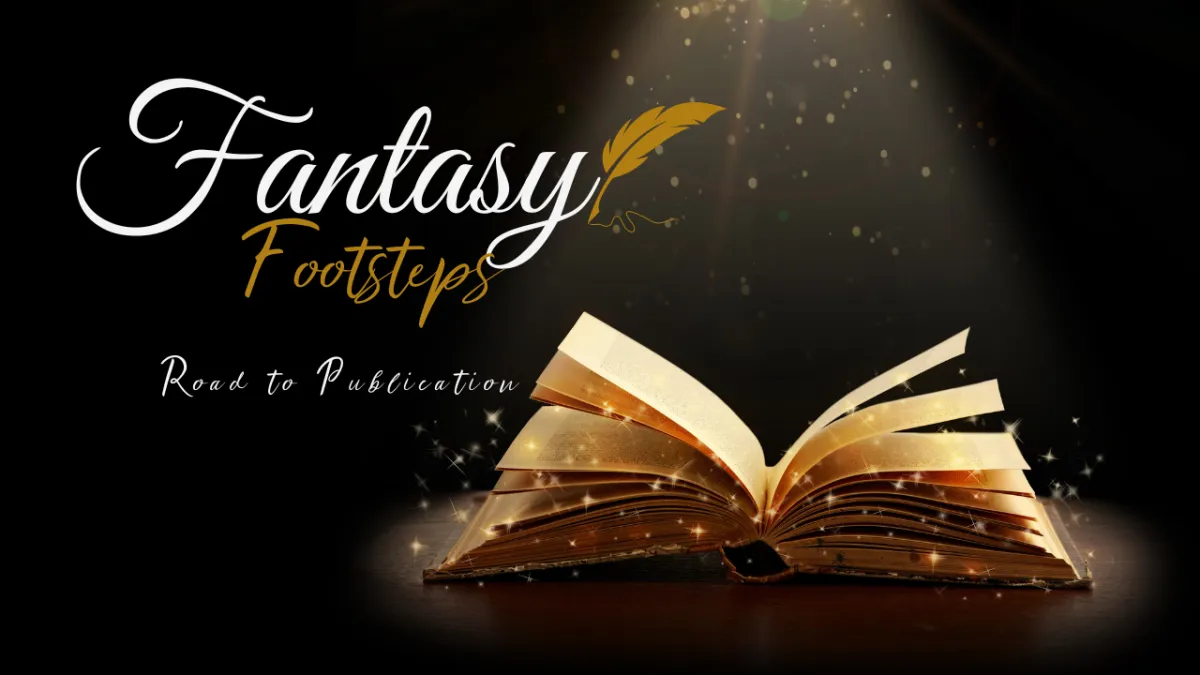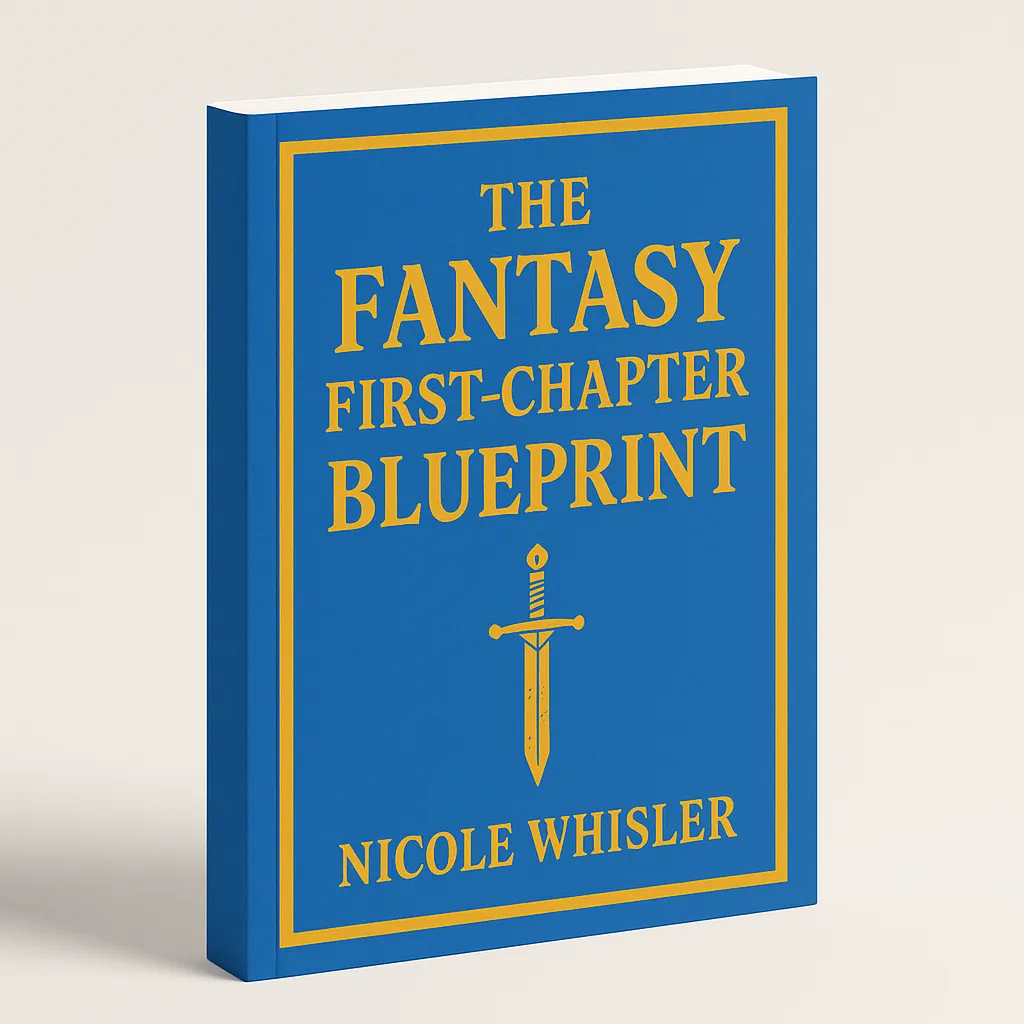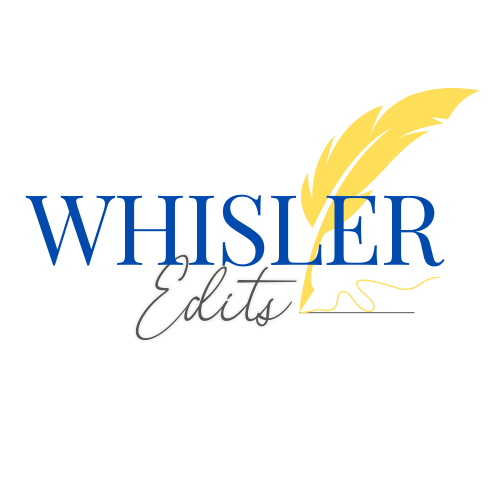The Fantasy First-Chapter Blueprint
Your first chapter is your one shot to hook an agent or a reader. Don't let the 7 deadliest mistakes land your manuscript in the rejection pile. This free 7-day email course gives you the step-by-step blueprint to avoid them and craft an irresistible opening.

Your Novel Matters ...
Looking for the right book coach for your fantasy novel?
Are you a fantasy writer …
… struggling to convert the vivid scenes of your fantasy novel from your imagination to the page?
… stuck in a loop where you constantly rewrite your opening pages?
… worried your story won’t resonate with your readers?
What if I could show you the exact steps week to week that would take you from brainstorming and drafting to revising and publication?
I specialize in developmental editing and book coaching for writers of fantasy novels—writers who value the craft of storytelling and wish to create stories that resonate.
My Services
Develop Your Ideas
Fantasy Footsteps: Road to Publication

I’ll let you in on a secret. All you need to succeed as a writer are three things:
A Roadmap: Illuminate your path with a step-by-step guide, ensuring you achieve your writing goals every week. From outlining to publishing, every stage of your journey is mapped out for success.
Mindset Mastery: Learn how your thoughts control your outcomes in your writing. Overcome self-doubt and unearth the confidence that will bring your unique ideas to life on the page.
Personalized Support: Prepare for comprehensive assistance, real-time accountability, and feedback tailored to your needs. From brainstorming sessions to final publication, you'll have a dedicated ally guiding you every step of the way.
With these three pillars, you'll unlock the potential to:
Craft a captivating story that enthralls readers from the first page to the last.
Develop complex characters and immersive worlds that resonate deeply with your audience.
Navigate the complexities of plot twists and pacing, keeping readers hooked until the final chapter.
Receive specific guidance on refining your scenes so that readers root for your protagonist.
Overcome writer's block and stay motivated throughout your writing journey, ensuring consistent progress.
Transform your rough draft into a polished, professional manuscript ready for publication.
Are you ready to turn your fantasy novel from a mere vision into a masterpiece that captures hearts and minds?
Join Fantasy Footsteps: Road to Publication and begin your author journey with everything you need to write a story that works.
Don't let your story remain trapped in your mind—bring it to life with me!
If you’re thinking, “Yes, please! Tell me what to do!” , I’d like to invite you to work one-to-one with me to finish your novel and write a story that works. Join my book coaching program designed specifically for fantasy writers—Fantasy Footsteps: Road to Publication.

Discover Helpful Tools
Resources For Writers
Here you will find some of my favorite resources for writers.
Add these books, podcasts, websites, and other resources to your writing toolbox to augment your writing at any stage.
Join My Free, Private Facebook Group
Finish My Fantasy Novel: Write & Revise My Best Book in 6 Months
In the group, I go live weekly with writing tips. The group is also a platform for writers to support each other and share their wins and progress.
Live training schedule:
1st Tuesday of the month: Free critique for someone in the group!
2nd Tuesday of the month: Writing sprint with fellow writers
3rd Tuesday of the month: Live training on a specific topic
4th Tuesday of the month: Interview with an author or marketing/business expert


Improve Your Craft
Writing Advice Blog
As a developmental editor and book coach, everything I post is designed to help you build your creativity, strengthen your prose, and explore new avenues in your writing. The opinions in each post are my own, but many are inspired by ideas from established authors and editors who excel in their fields.
Rely on my blog for clear and specific writing advice, motivational tips and grammatical aid, and interviews with experts!
Hi! I'm Nicole.
I’m a Developmental
Editor & Book Coach for Fantasy Writers.
Like you, I'm a writer. I understand the mental and emotional ups and downs of storytelling. Don't let resistance win! Recognize the value of good advice plus hard work.
My approach to novel writing is multifaceted. For a deeper understanding of my process and style, take a look at some of my favorite craft-of-writing books in my Resources section.
What can I say about myself? I read, I write, I read about writing, and I write about reading. It never gets old to me.

See what writers like you are saying . . .

Nadir Shirazi
“I’ve been stalling on my Islam-inspired sci-fantasy series for 10 years. But within 10 minutes of starting Nicole’s program, I started writing again."

Amanda Emerick
“I can’t recommend Fantasy Footsteps enough to writers who are legitimately looking to polish their craft, write, and eventually publish their novel."

Trinity Cunningham
“I loved discussing my story with Nicole. She provided me with invaluable insights I never would have considered on my own."
Latest on the Blog

You will find no pictures of kittens here. No images of favorite dessert recipes, snapshots of my recent vacations, videos of puppies playing the piano (although I do love dogs), or YouTube clips of monkeys stealing people’s sunglasses.
I’m genuinely sorry if that disappoints you.
Instead, you can rely on my blog for clear and specific writing advice, motivational tips, grammatical aid, and author/editor interviews.
As a developmental editor & book coach, everything I post is designed to help you build your creativity, strengthen your prose, and explore new avenues in your writing. The opinions in each post are my own, but many are inspired by ideas from established authors and editors who excel in their fields.
Some of these tips might be just what you need to hear. Others might not work for you personally, and that’s okay.
Apply the tips that fit your personality and writing habits, and feel free to adapt or ignore the others. For further questions and comments, you can email me or reach me through my Contact page.

Crafting a Page-Turning Opening Chapter
Discover in this post …
how to create a character worth rooting for from the start.
how to build narrative drive that keeps readers turning pages—so they want to read Chapter 2.
how to evoke genuine emotion from readers to immerse them in your story.
Turn the Page, Please
I’ve often written about what not to do in your novel’s opening pages. I’ve mentioned certain items that will turn readers away. Elements that will confuse them or distance them from your characters or story.
Today, let’s approach this topic from the opposite angle: discussing what to do to help engage and entice readers from the start.
First, what kind of experience do you want to create for your readers as you write your opening pages? Have you thought about your goals? Mine are threefold:
I want readers to root for my character.
I want readers to turn the page, not from obligation but from curiosity—or sometimes from a driving need to know what happens next.
And I want them to feel something by the end of the opening chapter.
Do your goals align with mine? If so, let’s work backward and explore exactly how to ensure we “get it right” on the page.
1 - How to Create a Character Worth Rooting For
There are four nonnegotiable items I’ve noticed across the board that help readers root for your main character:
A character worth rooting for wants something. These characters draw us in because it’s human nature to have goals around the clock. They might be lofty goals (defeat the monster, escape from the cell, or win the affection of the love interest) or mini goals (persuade someone to take a certain action, impress a friend, or get to the event on time). Even in the ordinary world toward the beginning of the story, before everything changes for your protagonist, your main character should be pursuing a goal if you don’t want them to come across as flat or unrealistic to readers.
With a character worth rooting for, readers know what’s at stake if the character doesn’t get what they want.

It doesn’t matter if you’ve included item #1 above if readers aren’t clear on why it matters to your character if they succeed or fail. A character needs to want something, but what exactly will happen if they get what they want? And what will happen if they don’t? The clearer and more specific, the better. Beginning writers often overlook this important part of the equation—and in doing so, they miss out on the opportunity to establish a richer connection between characters and readers.
A character worth rooting for makes decisions that move the story forward. Something will feel off to readers when everyone around your character is making important decisions, while your character is simply existing, being pulled around by the plot. If you’re worried about your protagonist coming across as “the boring one” compared to your side characters (which is a common problem in an early manuscript), ask yourself, “Is my character making major decisions that have clear consequences in upcoming scenes? Is my story happening to my character, or is it happening because of my character’s choices?” Your character’s choices should heavily impact the direction of the plot—this makes for a much more immersive read!
A character worth rooting for possesses certain qualities that have been proven to pull readers in. I’ve written a past blog post that covers this topic in detail and provides specific examples and explanations for the following nine traits proposed by Eric Edson: courage, unfair injury, skill, humor, niceness, in danger, loved by friends and family, hardworking, and obsessed. Refer to that post, Crafting a Compelling Character, to consider how you might assign at least five of these nine qualities to your own point-of-view character. I’d include them as early as you can to help readers bond with your character from the start.
***
Practical Tip: Call to mind your main character from your work in progress. Check to see if you can answer all four questions below with a “yes”:
Does my main character want something—and have I conveyed that desire on the page in my story’s opening?
Do readers know exactly why it matters for my character to succeed in getting what they want—or why it matters if they fail? Have I put the stakes on the page?
By the end of my opening chapter, does my character make a clear decision that will have definite consequences moving forward?
Does my character have at least five of the nine qualities in this post, and have I threaded in some of those traits in my opening chapter?
2 - How to Ensure Readers Turn the Page
Now that we’ve discussed how to help readers root for your character, let’s make sure to give them a reason to keep reading your story.
This piece of the equation has to do with a term called narrative drive, which refers to the sequence of cause and effect in your plotline. There’s a difference between your character moving through the story as a result of events that happen to them vs. characters moving through the story as a result of the decisions they’ve made.
To be clear, “this happens, then this happens, then this happens” isn’t the most effective way to hold readers’ attention.
“Selina fights and overcomes a monster, thus rescuing a victim taken captive in the lair, then returns home to face chaos within her family” suffers from this one-dimensional approach.
“But there’s conflict within that summary,” the devil’s advocate might say. “Readers like seeing action on the page. They love a good rescue scene. This Selina story could be gripping depending on how I write it!”
Exactly—depending on how you write it.
So let’s change the basic summary above to showcase Selina’s proactivity.

“Runaway Selina insults a monster with more brains than she expects (enough brains to catch her insults!), accidentally instigating a fight. After realizing she is no match for the monster physically, Selina tricks the monster through wordplay and earns herself a spare two minutes to rescue a captive she happens to glimpse deeper in the cave. The two rush out of the monster’s lair and into the light, only for Selina to come to terms with the captive’s identity: it’s her father’s young aide, Felix, who has been pursuing her for weeks on orders to bring her back home. Felix immediately restrains Selina and sets out to take her back to her homeland. Selina starts the journey alternating between trying to escape and trying to manipulate him into letting her go. But eventually, she finds she likes traveling with Felix and no longer seeks to escape at all.”
Do you see how all these events happen as the result of a decision Selina made?
It makes for a far more interesting story when your character’s decisions drive the narrative rather than the other way around.
Your characters should make decisions that have consequences. In the segment of the story above, Selina faces multiple consequences that relate directly to her actions. If she hadn’t insulted the monster, she wouldn’t have had to fight it to begin with. If she hadn’t decided to rescue the person in the monster’s lair, she wouldn’t now be captured by that very person. And if we draw this out and create a possible future between Selina and Felix (anyone else rooting for a love story here?), if she hadn’t journeyed anywhere with him, she wouldn’t have gotten to know him on a deeper level and ultimately given him her heart.
***
Practical Tip: Jot down at least one major event from your opening chapter (or potentially toward the start of your second chapter). Give yourself a gold star if this event occurred as a result of something your protagonist did. If this event isn’t logically linked to your protagonist, ask yourself, Can I give my protagonist more proactivity in this moment?
3 - How to Help Readers Feel Something by the Chapter's End
Now that you have a character worth rooting for and a reason for readers to turn the page, let’s work on the final goal in regard to creating a strong opening chapter: appealing to readers’ emotions.
First, I recommend choosing the emotion you want readers to feel. As writers, we say we want readers to fall in love with our characters and our world, but to do that, we should be able to answer the question, “What kind of experience do I want readers to have? How do I want readers to feel by the end of Chapter 1?”
Do you want readers to feel afraid? Excited? Anxious? Devastated? Intrigued? Disappointed? Amused? Curious?
Name the feeling. Then examine whether the way you’re presenting your opening chapter is effective enough to produce that emotion. This can’t remain solely in your head—it needs to be present in the words on the page.
Here are some tips for you as you determine whether you’ve succeeded in conveying your desired emotion:
Start your story in real time. If you’re telling readers about something horrific that happened in the past, readers aren’t likely to experience the emotion of horror. But if something horrific is happening on the page in real time (like if a character is in danger of getting their fingers chopped off), your chances of invoking horror from readers increases exponentially. One caveat here: Be careful of overdramatizing a situation—especially before readers have had a chance to get to know the character. A character who’s sitting at her dying father’s bedside on page one, for example, may not stir up sadness within readers until we’ve attached to that character emotionally first (which we can do by following the advice in Section 1 above).
Follow the structure of a working scene. I’ve gone into detail about this in a past blog post (“How to Write a Scene That Works”), so I’d recommend taking a look to make sure you’re setting up the events of your scene in a way that your character experiences a significant change by the end of the chapter. Your character will pursue a goal, undergo experiences that bring them closer to or farther from that goal, arrive at a turning point (an important action or revelation that sets up a choice), and make a decision that impacts the trajectory of the story. This structure is designed to pull readers through an emotional arc—one that mirrors your character’s journey so readers experience the change alongside them.
Be sure you’ve included not just the events on the page, but why those events matter to your protagonist. Until readers learn what’s at stake and get a glimpse of your character’s inner world, they won’t be able to care for your characters in the same way you do as the author. You’ll be missing an entire dimension of storytelling that’s all about the meaning behind the moment. Don’t withhold the reason something is important to your character. Instead, reveal that reason to draw readers in and keep them hooked moving forward.
***
Practical Tip: Ask a critique partner—or better yet, multiple—to read your chapter and

tell you what they felt by the end of it. If they name the emotion you were going for, you’re right on track! But if they say something else (or even worse, if they don’t feel much at all), you’ve still got work to do. That’s when it’s a good idea to find someone well versed in the writing craft, such as an editor or book coach, to read your chapter and work with you on bringing out the intended emotion in a more powerful way.
There you have it! Three important elements to help you hook readers, make them care about your characters, and leave them feeling something powerful by the end of your first chapter. If this post helped you see new ways to strengthen your opening pages, I’d love for you to email me at [email protected] and let me know!
Do you want to learn how to write a story that makes your target readers stand up and cheer? If you’d like support from A to Z (from brainstorming to drafting to revising to publication), book a Discovery Call with me to see if you’re a good fit to join my book coaching program, Fantasy Footsteps: Road to Publication. And if you haven’t done so already, grab your Free Guide on how to hook readers from your story’s start!

Capture Your Readers from Your First Scene
Get my exclusive blueprint—7 Mistakes to Avoid in Your Fantasy Novel’s Opening. Start your fantasy novel right!
Are you worried you've failed to establish a bond between readers and characters in your first chapter? Do you wonder if you've bogged readers down with your worldbuilding? Do you sometimes overlook essential conflicts? Many readers will put your book down if it doesn't grab their attention right away, so it's vital to evoke powerful emotions from readers as early as possible.
Don't let these common mistakes rob your story of its magic and momentum. Save your precious time and energy by ensuring you hook readers from the start. Grab your guide now and check your opening against these common missteps!
(You will also receive monthly writing advice, updates about my free live trainings, and direct access to replays. Unsubscribe anytime.)


